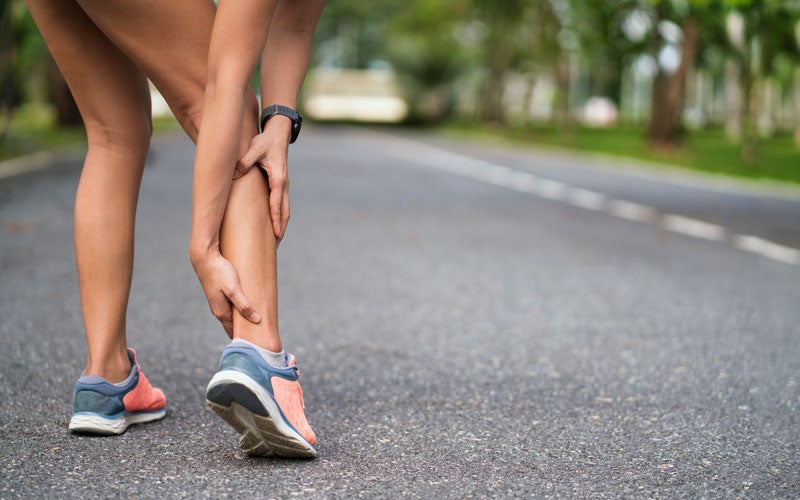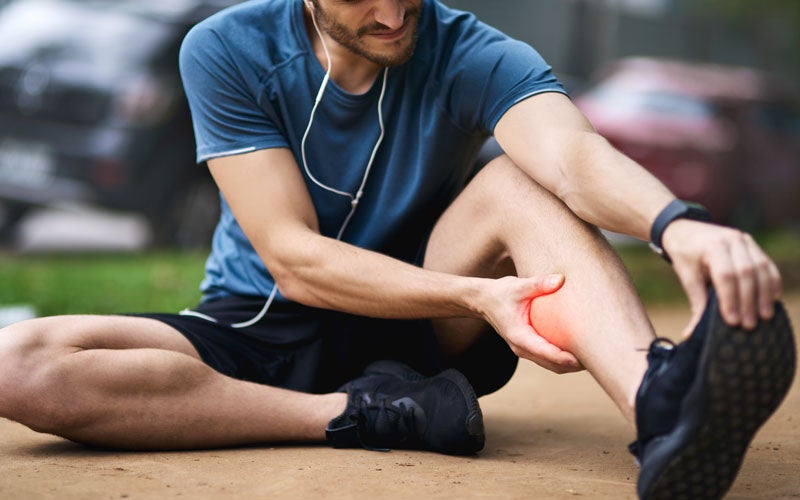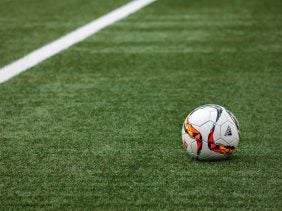Got muscle cramps? Our best ways to beat and prevent them
 ©TravelCouples
©TravelCouples
Muscle cramps are uncomfortable and usually painful. Discover here why they occur, what can be done about them, and how you can best prevent them.
What are muscle cramps?
Most athletes know the occasional twinge of a charley horse during a workout all too well, and many people also suffer from foot or leg cramps at night or recurrent eye twitches.
Muscle cramps are contractions of a muscle or entire muscle group that usually occur unexpectedly and uncontrollably. These sudden spasms are usually associated with stabbing pain. They may disappear on their own after a few minutes, or they may torment sufferers for a longer period of time. In some cases, the muscle fibers twitch, which is less painful than hardening, but still unpleasant.
If these involuntary cramping attacks jolt you out of sleep almost every night or occur regularly in everyday life, do consult a doctor.
What’s happening when you have a calf cramp?

So you’ve just finished a leisurely jog or the last rep of leg presses, and out of nowhere a painful calf cramp brings you to your knees.
This type of sudden spasm disrupts the local blood supply to the affected area. As a protective mechanism, for example in the case of excess strain or a lack of nutrients, your muscle fibers will contract vigorously. The smallest cellular elements, which are the muscular filaments actin and myosin, get tangled. As a result, your muscle can’t relax as it normally would. This leads to a “contraction” of the muscle fibers.
The calf – or any other part of the body where the muscles tighten up – feels hard and usually hurts or burns.
Types of muscle cramps
Our body has more than 650 muscles, including skeletal muscles, smooth muscles around our internal organs, and cardiac muscles. Most cramps occur in skeletal muscle tissue, especially in the legs, hands, and feet. Less common are cramps in the arms, abs, or back.
These are the most common forms of muscle cramping at a glance:
Hardening of the muscles
Muscle cramps that cause fibers to harden are especially frequent. Cramps in the calves are the most familiar manifestation. Anyone who frequently writes by hand has likely battled writer’s cramp in their fingers or hand. Even spasms in the orbital muscle of the eyes are possible. In these cases, the muscles contract uncontrollably and usually without warning.
Occasional muscle spasms of this type are usually harmless. They occur, for example, as a result of exertion – such as during an intensive exercise – and quickly subside. In other cases, muscle cramps indicate a nutrient deficiency. Vitamin D deficiency is quite common. Cramps can just as easily be a symptom of another illness such as an infection. Seeing a doctor will provide clarity here.

Twitching in the musculature
Fasciculation is the name for irregular and uncontrolled twitching of the muscles. It usually occurs in the arms or fingers, as well as in the eye or other parts of the face.
Unlike a sudden calf cramp, a twitch like this is usually not painful. It sometimes even goes unnoticed and subsides after a few seconds. Fasciculations may be an indicator of stress and may recur regularly during times of physical or psychological overload. In rare cases, it’s caused by a serious muscle disease. Here too, then, the following applies: If you suffer regularly from cramps, you’re better off consulting your doctor.
Feeling stressed out? Find out how exercise can help reduce stress.
Muscle rigidity (rigor)
Another form of muscle cramping is known as rigor – a muscle rigidity that can be accompanied by severe pain. This involves the simultaneous cramping of several muscles that are responsible for opposite movements (agonist and antagonist).
People experiencing rigor describe a sudden feeling of stiffness of their whole limb. They are unable to move for a short time. This particular form of muscle cramps can occur, among other symptoms, as side effects of certain medicines.
Can muscle cramps be dangerous?
Occasional cramps in the leg muscles or fingers are no cause for concern, but rather a sign from the body that it needs to rest for a moment. All the more reason not to neglect your recovery.
If cramping worsens or persists for a longer period of time, an expert should get to the bottom of it. The same applies to muscle cramps in the arms and torso.
What causes muscle cramps?
If you’re getting cramps, it’s not the muscle itself that is to blame, but the nerve that’s responsible for controlling the muscle fibers. When there is a demand for muscular activity, the brain sends signals to the corresponding muscle groups: the electrical impulses give the command to contract. Muscle cramps occur when the nerve pathways are disturbed and send the wrong signals.

This may be caused by many non-disease-related factors:
- Nutrient deficiency, e.g. vitamin D deficiency
- Hormonal changes, e.g. during pregnancy
- Physical overload, e.g. during exercise
- Disturbed blood flow, e.g. due to varicose veins or sudden cold weather
- Dehydration or lack of body fluids or electrolytes, e.g. due to heavy sweating, diarrhea, or vomiting
- Damage to the intervertebral discs causing nerve compression
- Certain medicines, e.g. antihypertensives for medical conditions, or laxatives
- Alcohol consumption
- Lack of sleep
Magnesium deficiency is often associated with muscle cramps. So far, however, no science has shown it’s a cause of muscle cramps. Just getting enough magnesium is also not a guarantee. And taking magnesium salts had no demonstrable effect against muscle cramps in studies1.
How to stop muscle cramps
A sudden muscle cramp often causes severe pain that needs quick action.
Here are the five best ways to stop calf muscle cramps and other leg cramps:
- Gentle stretching: If you experience a cramp in your calf muscles, press your toes against a wall or, while sitting, clasp the ball of your foot with your hands and pull it toward you.
- Tense the antagonist: Flex the muscular antagonist to force the cramping muscle to relax.
- Massage: Gently knead or massage the affected muscle fibers to relieve tension.
- Drink water: Low fluid intake is one of the common causes of muscle cramps. Address this issue by drinking a large glass of water or isotonic sports drinks. You can try increasing your potassium intake, too. Orange juice is an easy and delicious source!
- Heat: Home remedies like a hot water bottle, hot shower, or heating pad can relieve leg cramps or other cramps.

There are also ways to prevent muscle cramps:
- Eat healthy: Deficiencies can cause muscle cramps. Healthy and balanced nutrition, including all important nutrients, is the foundation of a life free from muscle cramps.
- Dietary supplements: We have difficulty absorbing certain important nutrients through our food. Supplementation of vitamin D, for example, can work towards preventing muscle cramps, according to studies2. If you think you have a deficiency, you might want to ask your doctor for comprehensive blood tests. Tip: Have you heard about our Vitamin Drops? They deliver droplets of sunshine to your whole body.
- Drink enough: If the muscle cramp is caused by a lack of fluids or electrolytes, make sure you always drink enough – especially in hot weather or on intensive exercise days when you sweat a lot. Plus: Avoid alcohol!
- Stretching: If you stretch for a few minutes a day or do mobility exercises, you can do your muscles good and counteract cramps permanently. By gently pulling the tissue around the muscles apart, they can be better supplied with nutrients, which makes them more resistant to stress. Read more about the best stretching exercises here.
- Boost blood flow: If an impaired blood supply is the cause of muscle cramps, regular hot-cold baths can be effective.
- Electrostimulation: Researchers at the German Sport University Cologne found that electrically induced muscle stimulation can significantly increase the individual threshold and thus prevent muscle cramps3.
- Sleeping position: If you suffer from muscle cramps, especially at night, you can try to prevent cramps by finding the right sleeping position. For example, place a pillow under your legs or let your feet hang over the edge of the bed.
Summary
- Cramps, sometimes called a charley horse, are sudden, uncontrolled muscle contractions. They usually happen in the legs, hands, and feet.
- There are various forms of muscle cramps, the most common being hardening – the classic leg cramp in the calves – or twitching, for example in the eyelid.
- Occasional cramps are harmless, but if they occur regularly and for longer periods of time, or in an unusual body part such as your arms or torso, consult a doctor. The same applies to a muscle contraction accompanied by dizziness or impaired consciousness.
- Occasional muscle cramps are caused by faulty or disturbed nerve signals from the brain. Reasons include overload, nutrient deficiency, and fluid or electrolyte imbalance, plus certain medications.
- A healthy diet, regular stretching and exercise, and targeted nutritional supplementation can prevent muscle cramps.
Sources for this article
We at foodspring use only high-quality sources, including peer-reviewed studies, to support the facts within our articles. Read our editorial policy to learn more about how we fact-check and keep our content accurate, reliable, and trustworthy.
- (1) https://www.medizin-transparent.at/magnesium-gegen-muskelkraempfe/
- (2) https://www.aerzteblatt.de/nachrichten/53921/Nuklearmediziner-warnen-vor-Vitamin-D-Mangel
- (3) https://fis.dshs-koeln.de/portal/de/publications/a-promising-approach-to-effectively-reduce-cramp-susceptibility-in-human-muscles(c9a28bc0-1361-4572-851d-9232b1764a29).html






















